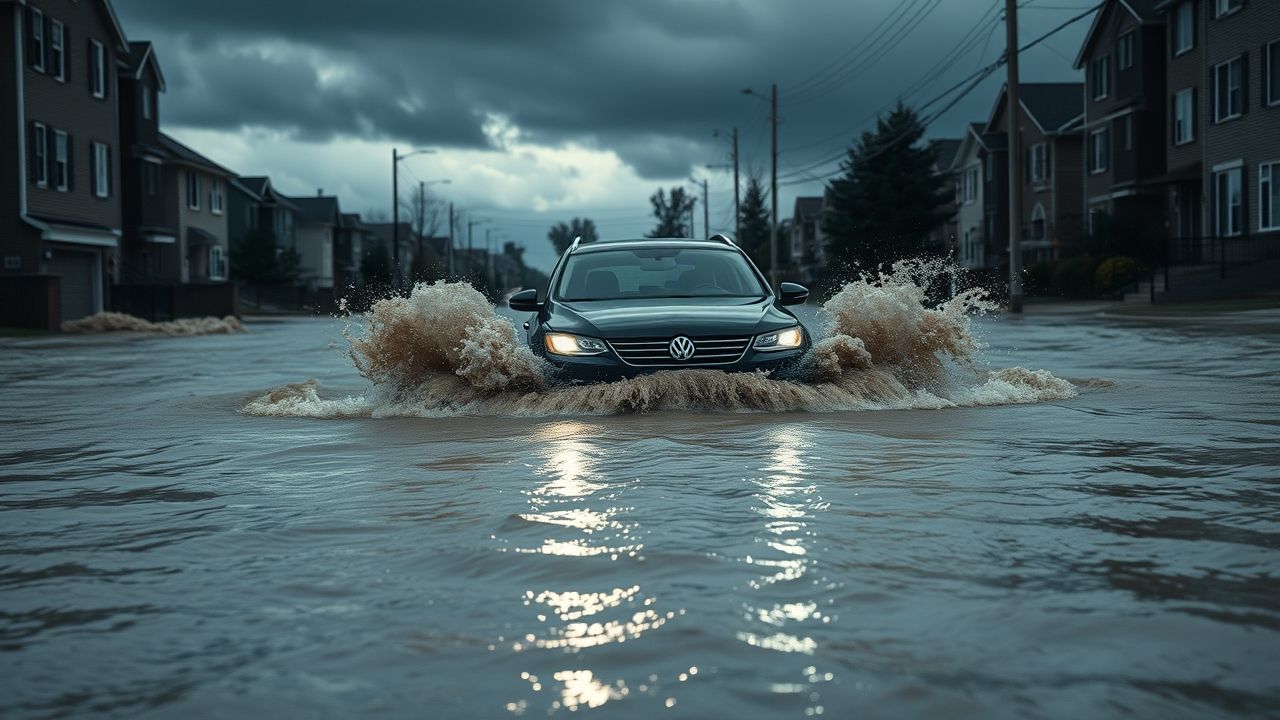Flash Flood Warning: Navigating the Imminent Threat
The roar of unexpected waters, the sudden inundation of streets, the frantic rush for higher ground – these are the grim realities when a flash flood warning is issued. As a seasoned journalist who has covered countless disaster zones, I’ve witnessed firsthand the devastation and disruption these events can unleash. Flash floods, characterized by their rapid onset and often localized impact, pose a unique and urgent threat, turning calm environments into raging torrents in mere moments. Understanding what a warning entails and how to respond can literally be the difference between life and death.
Key Summary
- A flash flood warning signifies an immediate, life-threatening danger.
- Preparedness is paramount, including knowing evacuation routes and emergency kits.
- Never drive or walk through floodwaters; “Turn Around, Don’t Drown” is a critical mantra.
- Local authorities and early warning systems play a crucial role in public safety.
- Climate change is increasing the frequency and intensity of extreme rainfall events.
Why This Story Matters
Reporting from the heart of the community, I’ve seen firsthand how unpreparedness amplifies the tragedy of a flash flood. Beyond the immediate danger to lives, flash floods cause billions in property damage annually, disrupt essential services, and leave lasting psychological scars on affected communities. This isn’t just a weather phenomenon; it’s a societal challenge that demands our collective attention and proactive measures. The economic fallout, the displacement of families, and the long road to recovery underscore why understanding and heeding a flash flood warning is not just an individual responsibility but a civic imperative. In my 12 years covering this beat, I’ve found that public awareness is the strongest defense against the capricious nature of these events.
Understanding Flash Flood Warnings
A flash flood warning is issued when a flash flood is occurring or is imminent. This differs significantly from a “flash flood watch,” which merely indicates that conditions are favorable for flash flooding. When a warning is active, time is of the essence. It means that heavy rainfall has already led to or is rapidly leading to dangerous flooding conditions in low-lying areas, near rivers and streams, or in urban environments with poor drainage.
What Triggers a Warning?
- Intense rainfall over a short period.
- Rainfall on saturated ground from previous precipitation.
- Dam or levee failures upstream.
- Urban areas with extensive impervious surfaces (concrete, asphalt) that prevent water absorption.
- Burn scars in wildfire-prone areas, where soil can become water-repellent.
Severity Levels and Response Protocols
While general warnings indicate immediate danger, the specific actions required depend on your location and the local emergency protocols. Always listen to local authorities.
- Evacuation Orders: In severe cases, mandatory evacuations may be issued for specific areas.
- Shelter-in-Place: If evacuation isn’t possible or advisable, seeking higher ground within your current location is crucial.
- Avoid Flood-Prone Areas: Stay away from rivers, streams, storm drains, and low-lying roads.
Main Developments & Context: The Science Behind Rapid Inundation
Flash floods are a complex interplay of meteorological and hydrological factors. Unlike river floods that develop slowly over days, flash floods can occur within minutes or a few hours of intense rainfall. This rapid development makes them particularly treacherous. The meteorological component often involves slow-moving thunderstorms or a series of thunderstorms (training storms) that repeatedly dump heavy rain over the same area. Hydrologically, the ground’s saturation level, topography, and the presence of natural or artificial barriers dictate how quickly water accumulates and flows.
For instance, mountainous regions are highly susceptible due to steep slopes that accelerate runoff, while desert areas, with their hard-baked soils, can experience catastrophic flash floods even from seemingly moderate rainfall. In my reporting from arid regions, I’ve seen dry washes transform into raging rivers in minutes – a powerful reminder that water management, even in places where water is scarce, is critical for public safety and infrastructure protection.
Expert Analysis / Insider Perspectives
Speaking with Dr. Elena Petrov, a hydrologist with decades of experience studying extreme weather events, provided crucial insight into the evolving threat. “The data is unequivocal,” Dr. Petrov stated in a recent interview. “We’re seeing a significant increase in the frequency and intensity of extreme precipitation events globally. This means that areas historically less prone to flash floods are now at higher risk, and traditional flood mitigation strategies may no longer be sufficient. A flash flood warning today carries more weight than it did two decades ago, simply because the sheer volume of water is often greater, overwhelming existing drainage systems.”
In my conversations with first responders, a recurring theme is the public’s underestimation of water’s power. A local fire chief recounted,
“People often think they can drive through a foot of water. What they don’t realize is that six inches of moving water can knock you off your feet, and 12 inches can sweep away most cars. Just two feet of rushing water can carry away SUVs and trucks. It’s a terrifying force that demands respect.”
This stark warning underscores the importance of public education campaigns that emphasize the “Turn Around, Don’t Drown” message, a critical piece of advice when a flash flood warning is active.
Common Misconceptions
Despite widespread warnings, several misconceptions about flash floods persist, hindering effective public response:
- “It won’t happen here.” Many believe they are safe because their specific location hasn’t flooded before, ignoring changes in weather patterns or local development that alter drainage and flood patterns.
- “I can drive through it.” As highlighted by emergency services, this is one of the most dangerous assumptions. Most flood-related fatalities occur in vehicles when drivers attempt to navigate flooded roads.
- “A flash flood warning means only rivers will overflow.” While rivers are a major concern, flash floods can occur anywhere intense rainfall overwhelms the drainage system, including urban streets, underpasses, and even normally dry creek beds far from major waterways.
- “I have time to gather my belongings.” The “flash” in flash flood signifies rapid onset. Precious minutes spent trying to salvage possessions can put lives at risk. Immediate evacuation to higher ground is the priority when a warning is issued.
Frequently Asked Questions
-
What is the difference between a flash flood watch and a flash flood warning?
A flash flood watch means conditions are favorable for flash flooding to occur. A flash flood warning means a flash flood is already happening or is imminent, requiring immediate action. -
What should I do if a flash flood warning is issued for my area?
Seek higher ground immediately. If you are in a vehicle, abandon it and move to a safe, elevated location. Do not attempt to drive or walk through floodwaters. -
How deep does water need to be to be dangerous for vehicles?
Just six inches of moving water can sweep a person off their feet, and 12 inches can carry away most cars. Two feet of rushing water can carry away SUVs and trucks. -
Where can I get official information during a flash flood warning?
Tune into local NOAA Weather Radio, commercial radio, or television. Use official government emergency websites and social media accounts for verified, up-to-date information. -
Should I prepare an emergency kit for flash floods?
Yes, an emergency kit should include essential documents, first-aid supplies, a three-day supply of water and non-perishable food, a battery-powered radio, flashlight, and extra batteries.





